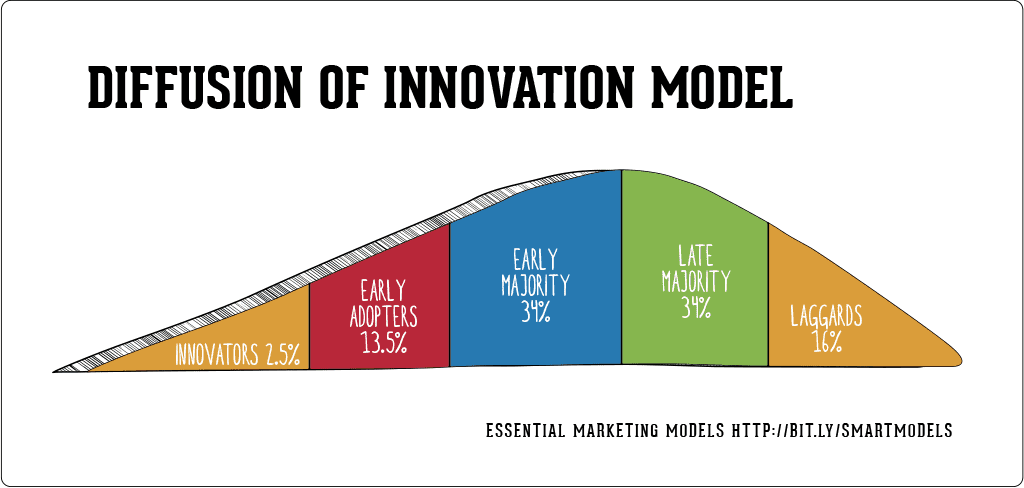Diffusion of innovations, or ideas, is a theory that follows the pattern and how fast ideas, practices, or products move throughout a population. The Diffusion of Innovations Theory was developed by E.M. Rogers in 1962 and is one of the oldest social science theories. This theory focuses on the pioneers, early adopters, early majority, late majority, and laggards.

The pioneers or innovators are considered to be risk-takers as they are the first to think of the idea or innovation. They are looking to expand technology that they believe would benefit society. The next adopter category is the early adopters. They are like the "beta test" group, they look for new ideas and try new technologies. As you continue to move up the bell curve the next group is the early majority. The early majority is a stage in diffusion of new emerging technology. This is often the first new technology or idea. Going down the bell curve is the late majority, this group is often scared of change and the only time they will test/try an innovation or idea is when it has already been tried by the majority of people. Lastly, the laggards, they are the last group to test the product.
As you continue to move up the bell curve, ideas, products, and practices are continued to be tested and help with consumers decision making process. I believe that this theory is extremely important because it allows us to understand how trends work. Being an early adapter can be very beneficial as it can bring someone a greater access to wealth if they invest in the product early enough. Typically those who are late adopters might have less money and don't want to risk investing in something in earlier stages because they don't want to take the risk. Some decide not to adopt at all because they're simply scared. Many do not put time into technology due to the fact of it being distracting.
The technology that comes to mind when I think of diffusion of innovation theory, the iPhone comes to mind. When the iPhone 3G, the first Apple phone, was released many others were still using Blackberry, Nokia, Motorola, etc. The iPhone was the first smartphone. Many consumers didn't make the switch to Apple phones when they were released because they were already so comfortable with the current technology, everyone had a difficult time in the beginning adjusting to this new technology. Adopters didn't pick up on the iPhone right away, however the iPhone completely took over the cellphone market and reinvetned cellphone compleltly.


No comments:
Post a Comment